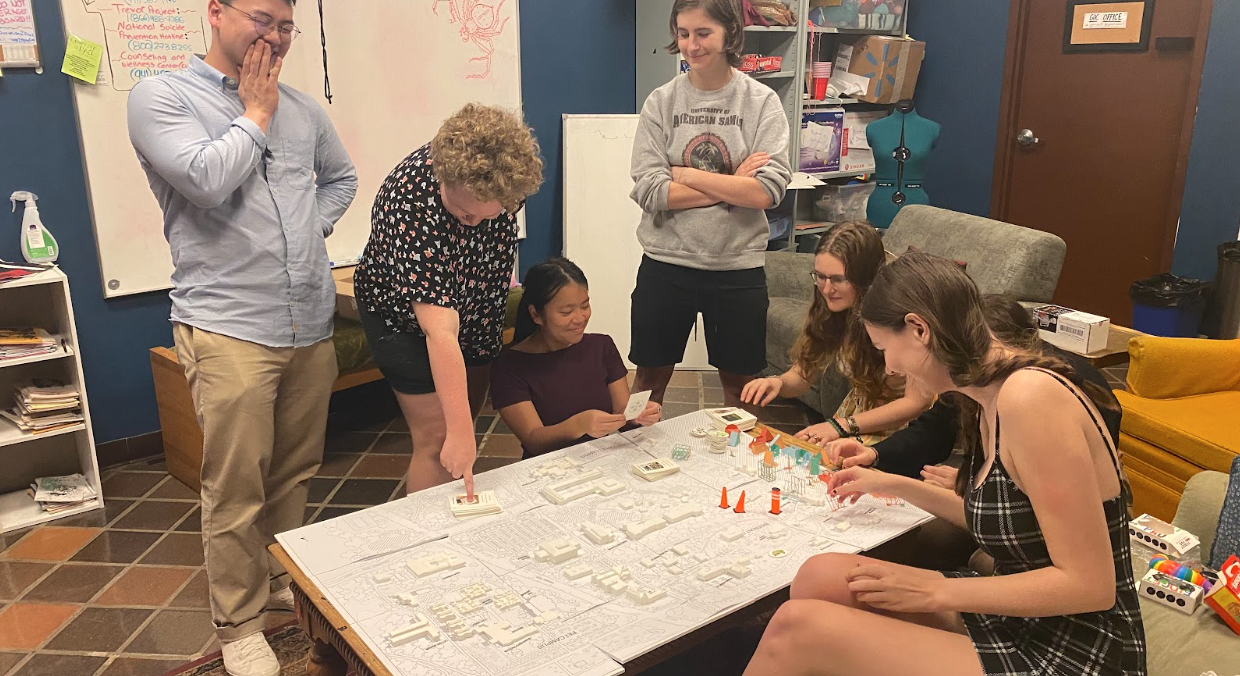Last year, former President Patricia Okker kicked off the New College Challenge: a campus initiative described as “a path to address the issues of social, economic and environmental resilience—issues that have a direct impact on New College, our community and our future” on the New College website. Collaborating college campuses associated with the New College Challenge are Kean University, Syracuse University School of Architecture, University of Florida (UF), University of Miami, University of South Florida (USF) and Yale. Continuing where Okker left off, New College Challenge Co-Chair and Professor of Sociology David Brain coordinated the visit of the Yale Challenge Academic Team to campus on Mar. 13 so they could survey its existing infrastructure and share new ideas on how to build a more sustainable, more stable New College.
Leading the platoon of Yale students was Professor and Founding Director of the Urban Design Workshop at the Yale School of Architecture, Alan Plattus. According to Yale’s website, Plattus began teaching at Yale in 1986. No stranger to stretching across the map—going so far as to direct a collaboration between Yale and Beijing’s Tsinghua University—Plattus was able to coordinate the efforts of 11 Yale graduate students and direct them towards New College’s campus.
“We really need the input of this community as we return to our campus to work for another six or so weeks, and hopefully bring our preliminary thoughts with your help in line with directions that will be really constructive and useful for you,” Plattus said during a presentation given at College Hall’s Music Room. “Over the last ten years or so, I’ve done a lot of work both academically and professionally on issues of coastal adaptation and resilience.”
As the presentations began, the emphasis Plattus placed on coastal adaptation and resilience became warranted: a recurring theme among the student presentations was finding a way to coexist with rising sea levels in Florida—a hot-button issue amidst climate change.
Among these innovative, ambitious solutions included a “sponge city” system for dealing with water and turning it into an overarching food and transportation system by slowly eroding concrete, and turning parking space into a storm garden. Another solution involved extending nearby rivers artificially to connect them to Sarasota’s ponds and use seagrass as a natural storm protection mechanism.
In regards to the capabilities and capacity of the campus, visiting Yale student Miranda Clark noted that having hands-on experience with the campus changed her perspective. The intentions of her team—consisting of herself, Kevin Yang and Ben Acheampong—were to better understand the campus’ scale, but her priorities changed after having walked the campus herself.
“After today our team is interested in learning how students navigate the campus,” Clark said.
Clark and company’s plans were to allow for student installations, but added that “those spaces already exist. There are maintenance issues at large, but there’s a very strong sense of discovery in a place I wasn’t expecting.”
Regardless, she and her team continue to work towards developing an ecosystem for student involvement.
“How can we, through tactical urbanism, break these walls and expand student access space?” Clark asked.
Tactical urbanism—as defined by Laura Pfeifer in The Planner’s Guide to Tactical Urbanism—is the organization of “citizen-led […] low-cost, temporary measures” to make improvements within a given community. In order to enable Novos to experiment directly with movements in tactical urbanism, Clark’s team created a board game in the vein of Monopoly titled “New Circus in Town,” to simulate what could be done by expanding student access space.
Regardless of the challenges imposed by New College’s modest size—something noted during project presentations—the small details posed the greatest curveball for the visiting student architects.
“To date—so far—we’ve sorta had to think at a bigger scale because we’re scared of getting to a level of detail in the absence of knowledge,” Plattus said. “The next couple of days here will be crucial because as architects, we’ve all seen some stuff here that totally changed our perception.”
Among Plattus’ parting words for both visiting students and journalists amidst the audience were, “the spirit of this is ‘work-in-progress.”

